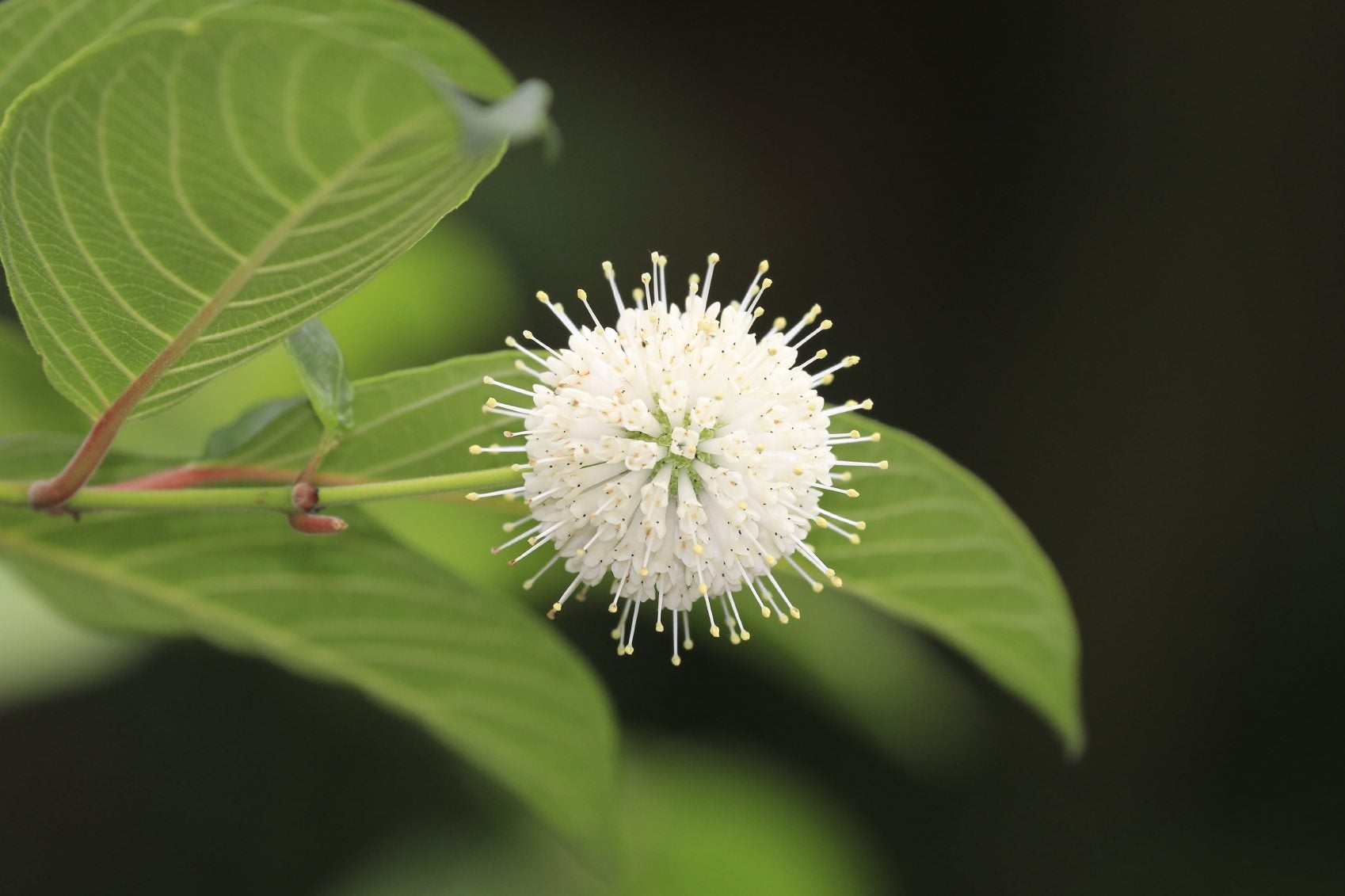Buttonbush Plant Care: Tips For Buttonbush Planting In Gardens


Buttonbush is a unique plant that thrives in moist locations. Buttonbush shrubs love garden ponds, rain ponds, riverbanks, swamps, or just about any site that is consistently wet. The plant tolerates water as deep as 3 feet (1 m.). If you’re thinking about planting a rain garden, growing buttonbush is a great idea. Read on for buttonbush plant info, including a few tips for buttonbush plant care.
Buttonbush Plant Info
Buttonbush is known by a number of alternate names including button willow, pond dogwood, swampwood, or button wood. The interesting summer blooms, which look like spiky ping pong balls, have earned the plant the monikers of Spanish pincushion, globeflower, honeyball, or little snowball. If you purchase the plant from a nursery, you’ll get what you’re looking for if you refer to the plant by its scientific name – Cephalanthus occidentalis. Buttonbush is a beneficial plant in many ways. Growing buttonbush along riverbanks or other riparian environments provides seeds for geese, ducks, and shorebirds, and songbirds also like to nest in the foliage. Songbirds, hummingbirds, and butterflies are plentiful when a buttonbush shrub is in the neighborhood. Deer snack on the twigs and leaves, so fair warning if you want to grow buttonbush in your garden!
Growing Buttonbush Shrubs
Buttonbush planting is a cinch. Buttonbush is happiest if you leave it alone and let the shrub just do its thing. Simply plant your buttonbush shrub in a moist place. Full sun is preferred, but the plant tolerates partial sunlight too. This North American native is suitable for growing in USDA plant hardiness zones 5 through 10.
Buttonbush Plant Care
Buttonbush plant care? Really, there isn’t any – the plant doesn’t like to be fussed over. Basically, just be sure the soil is never dry. Buttonbush doesn’t require pruning, but if it becomes unruly you can cut it to the ground in early spring. It is a relatively fast-growing plant that will rebound quickly.
Sign up for the Gardening Know How newsletter today and receive a free copy of our e-book "How to Grow Delicious Tomatoes".

A Credentialed Garden Writer, Mary H. Dyer was with Gardening Know How in the very beginning, publishing articles as early as 2007.